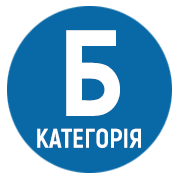THE ANALYSIS AND FEATURES OF IMPLEMENTATION OF BLENDED LEARNING MODELS INTO EDUCATIONAL PROCESS AT A HIGHER EDUCATIONAL INSTITUTION
DOI:
https://doi.org/10.25128/2415-3605.18.3.4Keywords:
blended learning, rotation model, flipped model, individual rotation model, flex model, self-blend model, enriched virtual modelAbstract
The article presents the analysis of the basic models of blended learning, their features and advantages in the educational process. The author analyzes the following common models: rotation model and its modifications (station rotation model, lab rotation model, flipped model, individual rotation model); flex model; self-blend model; enriched virtual model. It is determined that each model has its own characteristics and needs both insignificant and fundamental changes in the organization of the educational process. Rotation models are aimed at changing the learning environment: the station rotation model changes the modes of work in a classroom; the lab rotation model changes the modes at an educational institution; the flipped model changes the modes in a classroom, at home and does the “flipping”; the individual rotation model provides individually selected mode. Flexible model provides studying the material online independently on individual schedule. The self-blend model allows a student to independently choose courses, which can be studied as an addition to the main courses. The enriched virtual model is not fully individualized, but it involves studying one or more online courses regardless of student's location, whether it ist home, university, or any other place. Based on the analysis of the most common models of blended learning, its general features as educational technology are highlighted. In particular, organizational, technical, informational and methodical features are defined. The organizational feature is the restructuring of the training space: the distribution of working areas (rotation models of blended learning); flipping the rigid organization of training within the classroom and independent work at home (flipped model); and orientation to the student's personal needs (self-blend model, flex model, individual rotation model). The technical features include the provision of educational institutions with computer facilities and the availability of specially equipped classrooms for conducting classes. Informational features include the availability of digital educational resources for learning the content of the discipline and their upload in the educational environment of an educational institution. Methodical features include an increase in the number of different methodological approaches to the organization of training. In this case, the methods of teaching aimed at the development of thinking, life skills, professional skills, problem-solving skills, working skills in cooperation, self-education skills and mutual learning are relevant.
References
Buhaychuk K. L. Zmishane navchannya: teoretychnyy analiz ta stratehiya vprovadzhennya v osvitniy protses vyshchykh navchal'nykh zakladiv [Blended learning: theoretical analysis and strategy of implementation in educational process of higher educational institutions]. Information Technologies and Learning Tools. – 2016. – Vol. 54. Available at: https://journal.iitta.gov.ua/index.php/itlt/article/view/1434/1070. (In Ukrainian).
Stetsenko N. M. Problemy stvorennya informatsiyno-osvitn'oho seredovyshcha dlya studentiv ochnoyi ta zaochnoyi (dystantsiynoyi) form navchannya [Problems of informational and educational means for students of internal and extra-mural (distant) forms of learning]. Materialy VIII Mizhnarodnoyi naukovo-praktychnoyi internet-konferentsiyi «Tendentsiyi ta perspektyvy rozvytku nauky i osvity v umovakh hlobalizatsiyi» [VIII Int. Conf. «Tendencies and prospects for science and development in the minds of globalization»], Pereiaslav-Khmelnytskyi, 2015, Vol. 8, pp. 418–420. (In Ukrainian).
Despite Popularity, Not Everyone Can Successfully Learn Through Online Courses // ScienceDaily. 2008, February 28. Available at: http://www.sciencedaily.com/releases/2008/02/080226113511.htm.
Foong M. B., Toh S., Aw I., Ong M. Video conferencing for Blended Learning. Available at: https://ictconnection.moe.edu.sg/publications/i-in-practice/articles&func=view&rid=211.






